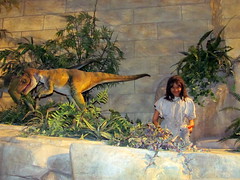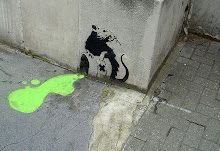I read recently about a new study: Trap geometry in three giant montane pitcher plant species from Borneo is a function of tree shrew body size. The study describes how one of the largest carnivorous plants in the world, Nepenthes rajah, may have evolved not to eat animals, but to eat poo. And you thought that it was just a coincidence that it looks like a toilet. Though I guess in Borneo they use squat toilets, but whatever. The study shows that the distance between the 'seat' and a gland that extrudes a nectar-like substance on the 'lid' is the exact height of a local tree shrew, Tupaia montana. Now before you think they just were measuring animals at random, these critters poop where they eat (despite any advice to the contrary), to mark their territory and keep away any competitors. However, when feeding from this pitcher plant, the feces fall in the 'bowl' of the plant, and the plant becomes a coprophage. And if anything needs a picture it's a tree shrew pooping in a toilet plant, so if anyone has one, please send it my way.
I'm sure that N. rajah is not picky about what ends up in it's bowl for it to 'eat,' so it's not really 100% vegetarian (some treeshrews and mice do fall in and die). It does make the whole diet nomenclature seem kind of silly. 'Vegetarian plant' sounds weird to me (though admittedly 'vegetarian' is not a very specific term to say the least). Especially for eating feces. And especially since I put manure on my vegetables in my garden, and they 'eat' that. Sure a special organ made to trap animals and/or animal byproducts is a little more advanced than just sucking up whatever from the roots, but many plants excrete enzymes from their roots to digest organic material before it is absorbed by the roots. But again, that is even less specificity than just having a bowl for stuff to fall in, and definitely less than having one set up to be a treeshrew rest stop.
Would you eat a carnivorous plant? How about a vegetarian plant? Or a hypothetical vegan plant? The only example of the former that I've seen for sale as food is the possibly protocarnivorous plant Capsella bursa-pastoris, commonly known as shepherd's purse. I have eaten this before I knew what it was, in frozen steam buns I got at an East Asian grocery store. I now avoid it, because it's just as easy to do so, and then my conscience is clear.
Another edible protocarnivorous plant is Proboscidea spp., or devil's claw. Here is a blurb on it from Southwestern Endangered Aridlands Resource Clearing House:
Cultivated by many Southwest tribes, the seed is rich in oil and protein.[...] Dried seeds can be peeled and eaten[...]. The young fruits, when still tender, can be cooked as an okra-like vegetable.Proboscidea are also used to make baskets, which you may or may not consider vegan. I read some chatter that that Sarracenia purpurea (purple pitcher plant) and Drosera rotundifolia (common sundew) are used in traditional medicines, and the latter possibly in some modern ones. Would it be ethical/vegan to use these medicines?
I'm not sure if N. rajah is edible, or even if anyone has tried eating it, though I can't see how the treeshrews are being particularly exploited. Undoubtedly if the toilet plants were commercially cultivated I can imagine some horrible fate for the treeshrews akin to foie gras ducks.
So as always, let me know what you think. Where do you draw the line?











